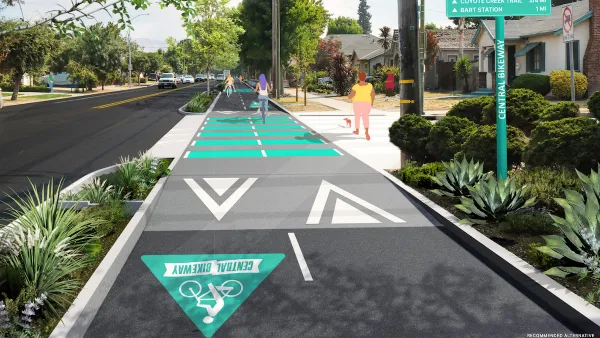Copenhagen is often cited as the world’s most livable city—a city characterized by bicycles and shared open spaces. But the road to get there has required compromise among politicians and an active and engaged community.

Copenhagen has been called the world’s greenest and most livable city, and it has the added benefit of being capital of the world’s happiest country, Denmark. Writing in Next City, Feargus O'Sullivan finds that the ascendancy of Copenhagen hasn't been as smooth as many believe and additional challenges on the horizon, including a dearth of affordable housing remain a problem for the city.
Right now, for example, Copenhagen is considering a new harbor tunnel that, if built, could end up flooding the city center with cars. Growth in housing demand is galloping ahead of home building, causing higher-than-ever housing costs. Some key housing schemes built so far have made some missteps and predominantly targeted the already well-served rich.…
The urbanism movement’s model city is not immune to the challenges of growth, climate change and increasing economic disparity.
Where Copenhagen has succeeded is in the willingness of its leaders to seek compromise, an outcome of the country's multi-party system. Proposals won't survive unless, as O’Sullivan writes, "their arguments aren’t backed up by data." Risk taking and engagement inside and outside of government is also cited as one of the city's strengths. Progressive activists have rallied to save open space and force better bicycle infrastructure, while one city engineer worked to reduce parking in the city through "stealth urbanism." O'Sullivan provides this interesting anecdote from Copenhagen architect Jan Gehl.
“For many years, Copenhagen had an excellent city engineer who said ‘if you can’t park, you don’t drive.’ Then he said ‘I’ll take 2 percent of the parking out of downtown every year, and I won’t tell anybody so nobody will notice.’ So every year, he reduced the amount of parking space and put in more tables, more chairs,” Gehl recalled at a forum hosted by The Atlantic in October. “The place became nicer and nicer, and people changed their habits, taking their bikes or the bus or metro. Over a period of time, the pattern of behavior has changed. You could call it stealth urbanism.”
FULL STORY: Even Copenhagen Makes Mistakes

Planetizen Federal Action Tracker
A weekly monitor of how Trump’s orders and actions are impacting planners and planning in America.

Silicon Valley ‘Bike Superhighway’ Awarded $14M State Grant
A Caltrans grant brings the 10-mile Central Bikeway project connecting Santa Clara and East San Jose closer to fruition.

Amtrak Cutting Jobs, Funding to High-Speed Rail
The agency plans to cut 10 percent of its workforce and has confirmed it will not fund new high-speed rail projects.

Chicago Eliminates Parking Minimums Near Transit
Changes to a city ordinance make it easier to build ‘by-right’ car-free developments near train stations and pave the way for more affordable housing.

One Year in, Indy BRT Line is the City’s Most Popular Bus Route
The Purple Line serves over 100,000 riders per month.

Oregon Approves Ambitious Framework for ’Microgrids’
Local energy “islands” within the larger power system ensure key facilities can remain online during emergencies and power outages.
Urban Design for Planners 1: Software Tools
This six-course series explores essential urban design concepts using open source software and equips planners with the tools they need to participate fully in the urban design process.
Planning for Universal Design
Learn the tools for implementing Universal Design in planning regulations.
Caltrans
City of Fort Worth
New Jersey Institute of Technology
Mpact (founded as Rail~Volution)
City of Camden Redevelopment Agency
City of Portland
City of Laramie





























